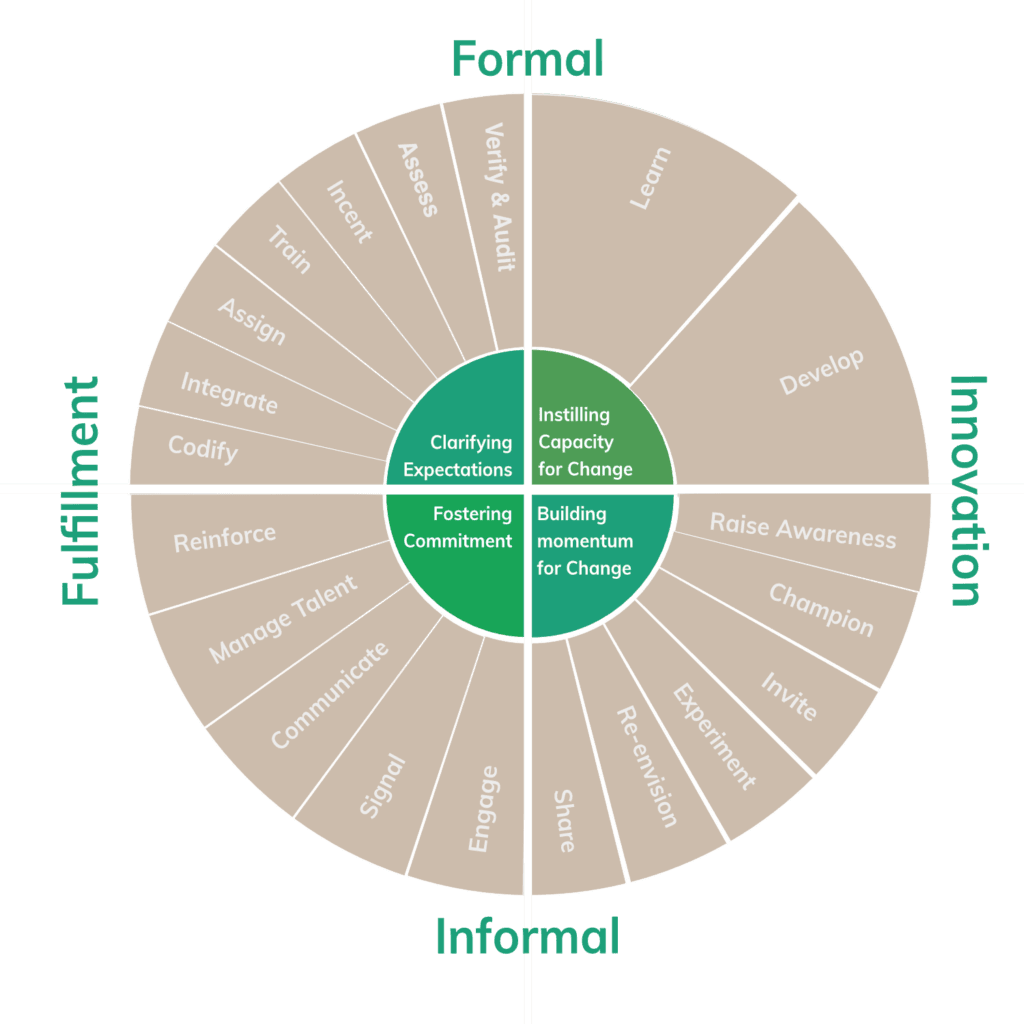This simple message can spark two distinct reactions:
- Relief: “Great guy, but he wasn’t driving real change. Hopefully, a new leader can create greater positive impact.”
- Panic: “Oh no! What will happen to the program now?”
It’s a serious concern. Over the years, I’ve witnessed organizations—both corporations and government bodies—lose their momentum the moment a leader steps down. Whether it’s due to retirement, career changes, or the end of their term, the ripple effects are undeniable. One of the largest housing associations in the Netherlands, for example, quickly fell from being a frontrunner to a mere follower in just a few months after such a transition. Similarly, when Paul Polman left Unilever, the company’s ambitious sustainability targets were deemed “unrealistic” by the new CEO, shifting Unilever from an inspiring global leader to a less impactful example.
These situations highlight a sobering truth: sustainability goals too often rely on the shoulders of individual leaders. When they leave, their vision can vanish with them.
But there’s another side to this story. Leaders like Ray Anderson of Interface or Yvon Chouinard of Patagonia have shown us what’s possible. These are people who had their transformative “spear in the chest” moments, embedding sustainability deeply into the DNA of their organizations. Remarkably, even after they stepped away—or in Ray Anderson’s case, passed on—their visions endured. Interface’s “Climate Take Back” strategy flourished, and Patagonia embraced a groundbreaking stewardship ownership model.
What’s the Difference?
Why do some organizations lose their way while others thrive, even without their original champions? The answer lies in culture. Sustainability needs to go beyond bold visions and metrics—it must become intrinsic to how things are done.
In 2013, while documenting Interface’s “Mission Zero” journey, I saw this principle in action. Two standout strategies caught my attention:
- Engaging Employees’ Families: Interface provided materials for employees’ children to talk about sustainability in their schools. By empowering young voices, they created ripple effects far beyond the workplace.
- “Love on the Factory Floor“: Ray Anderson told a powerful story of a forklift driver who, during a casual conversation, eloquently explained how his daily work contributed to Interface’s global mission. This kind of personal alignment didn’t happen by accident—it was nurtured.
These efforts weren’t just programs—they were cultural shifts.
Years later, reports like Embedding Sustainability in Organizational Culture by Stephanie Bertels and Embedding Sustainability in Municipal Government by John Purkis, expanded on these concepts, offering frameworks to make sustainability stick. More recently, books like Embedding Sustainability by Pia Heidenmark Cook and Lisen Wiren have added to this toolkit, showing how companies like IKEA use frameworks like the FSSD (Framework for Strategic Sustainable Development) to integrate sustainability into their core processes.

From my experience, three key actions help prevent that dreaded “Oh no!” moment when a leader departs:
1. Build Capacity Across the Organization
Equip everyone with a shared understanding of sustainability challenges and opportunities. Help employees see how their roles connect to the bigger picture. As Peter Senge explains in The Fifth Discipline, when everyone feels ownership of a shared vision, the initiative transcends individual leaders.
2. Embed Sustainability into Systems and Structures
Move beyond pilot projects and integrate sustainability into core policies, processes, and guidelines. In Eindhoven, for example, sustainability was written into the coalition agreements at the city’s governance level. This institutionalized approach ensured alignment, regardless of leadership changes.
3. Communicate Transparently and Boldly
Storytelling isn’t about greenwashing; it’s about authentic engagement. Interface’s “Cut the Fluff” campaign, for instance, educated the market about sustainability, empowering customers to ask the right questions. Their focus on transparency and education ultimately outshone competitors making exaggerated claims.
The Call to Action
As changemakers, we need to move beyond strategies and visions to make sustainability the beating heart of our organizations. At FutureFit Collab, we focus on three core pillars to empower change:
- Sustainability Skills: Mastering strategy, reporting, and beyond.
- Embedding Skills: Learning how to weave sustainability into organizational culture.
- Inner Leadership: Cultivating resilience, courage, and authenticity in ourselves.
The next challenge isn’t just creating sustainable programs—it’s ensuring they thrive, no matter who’s at the helm. More on that in next week’s story.

